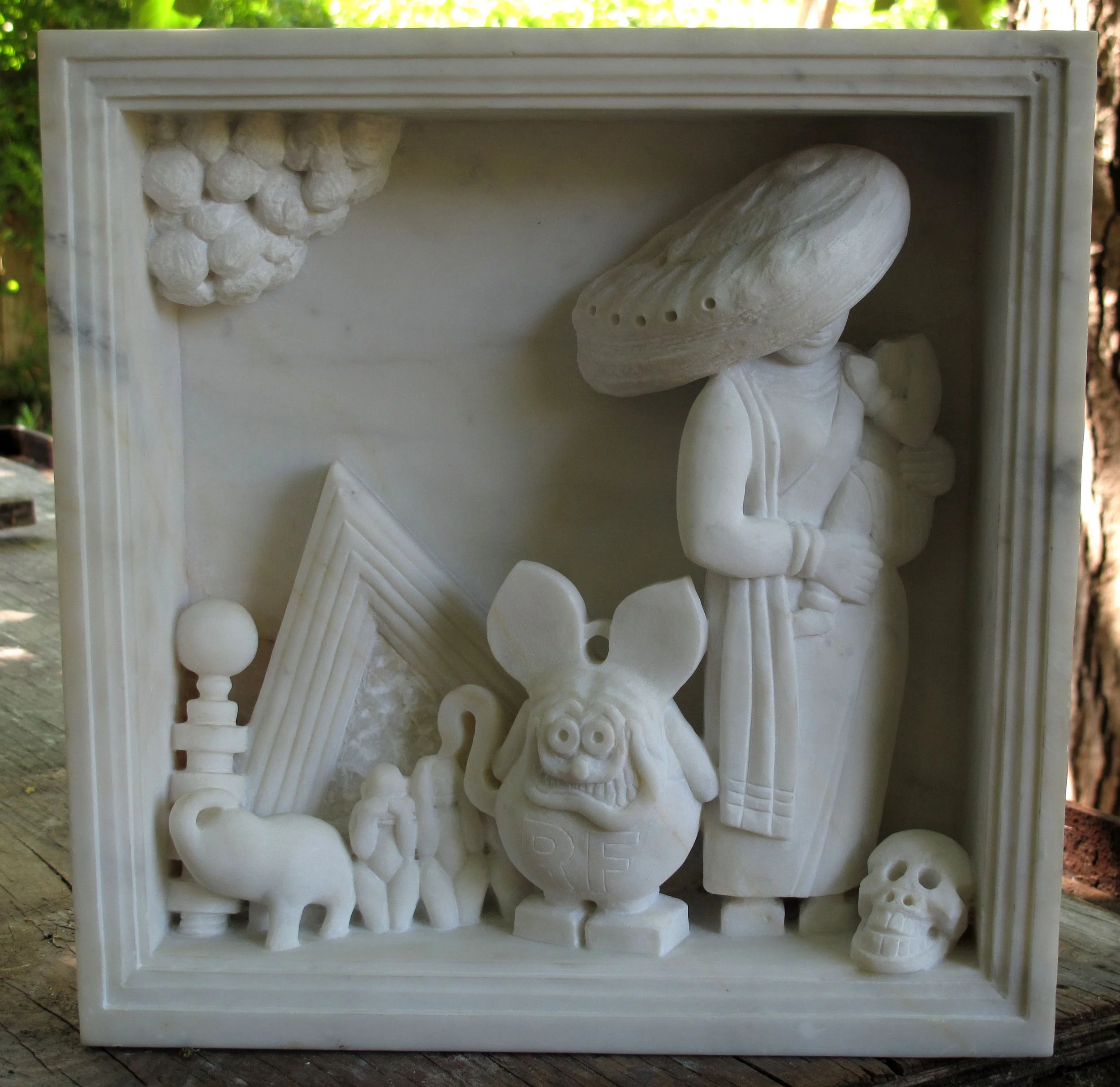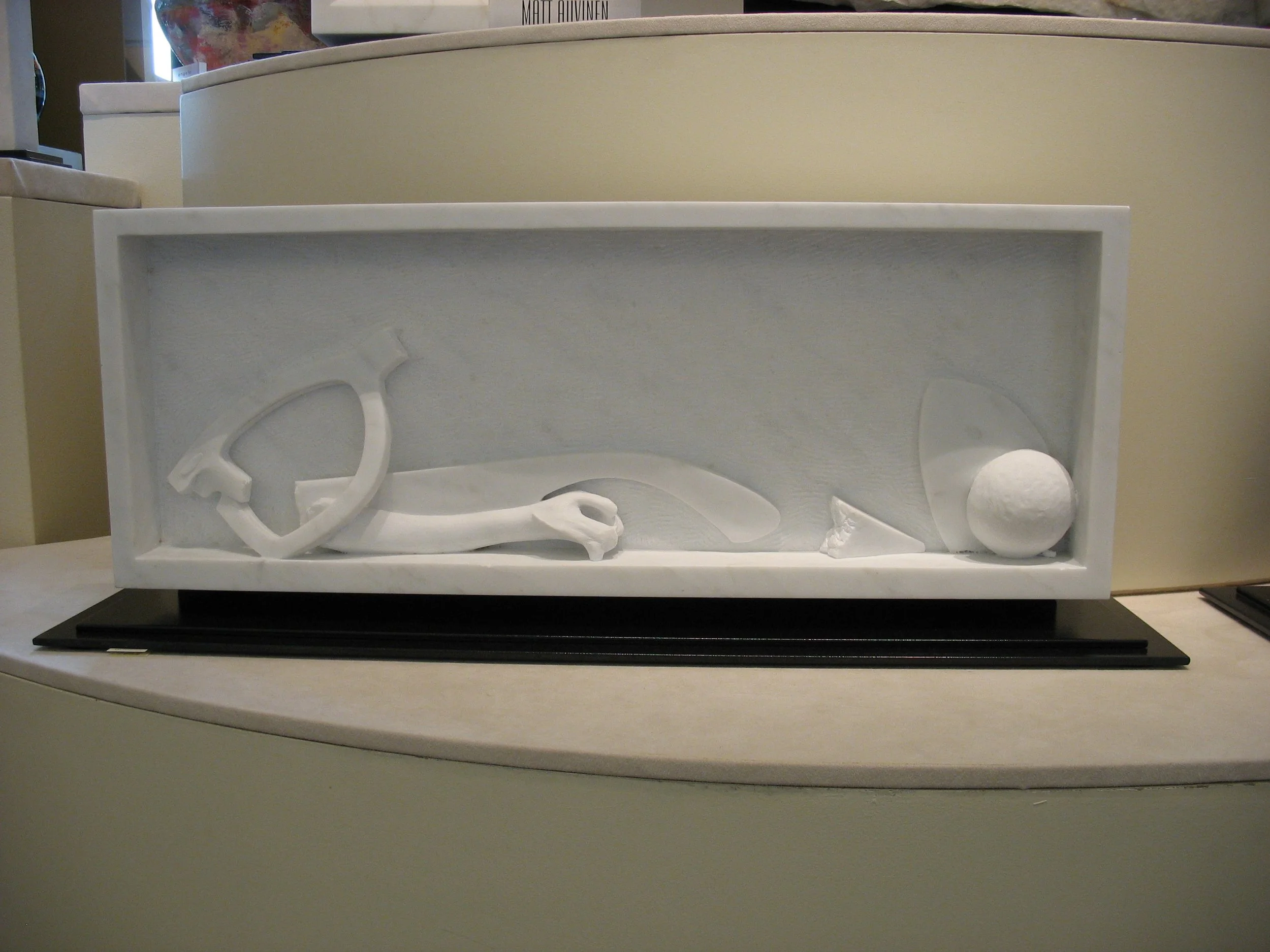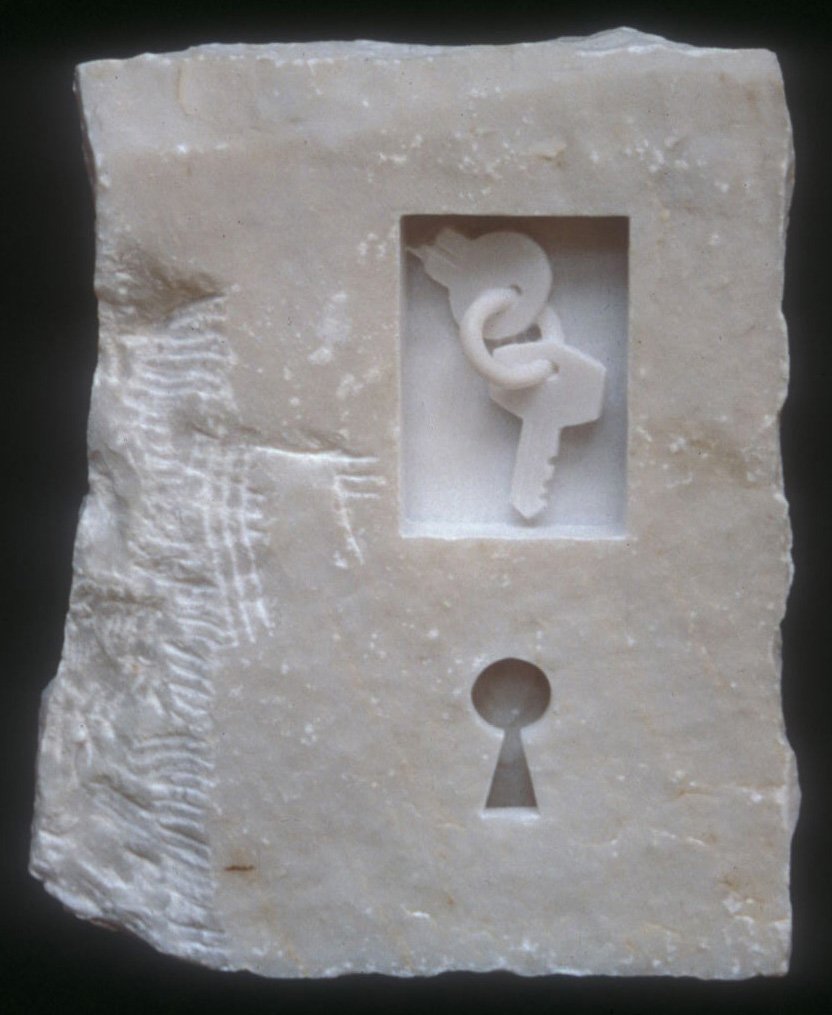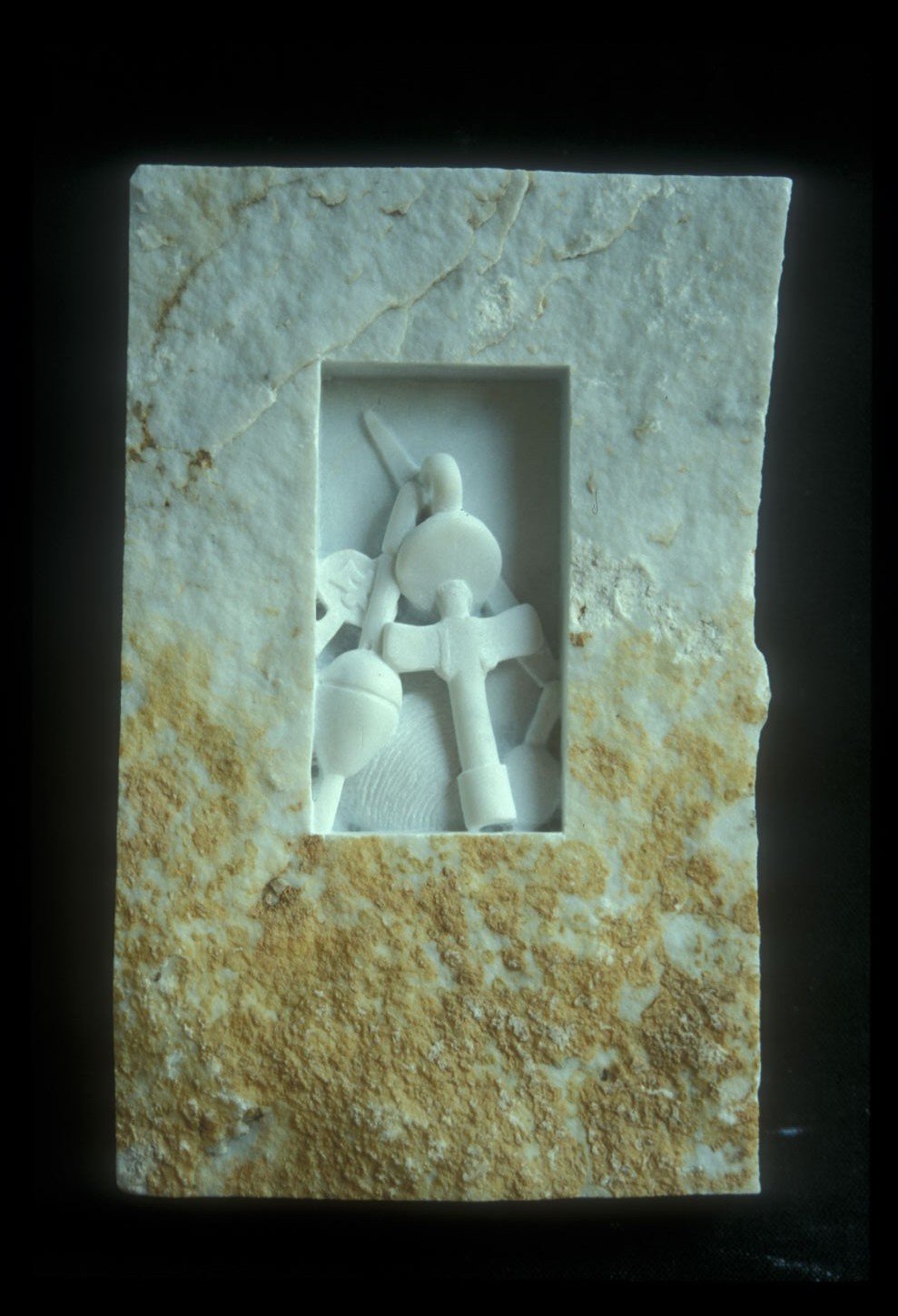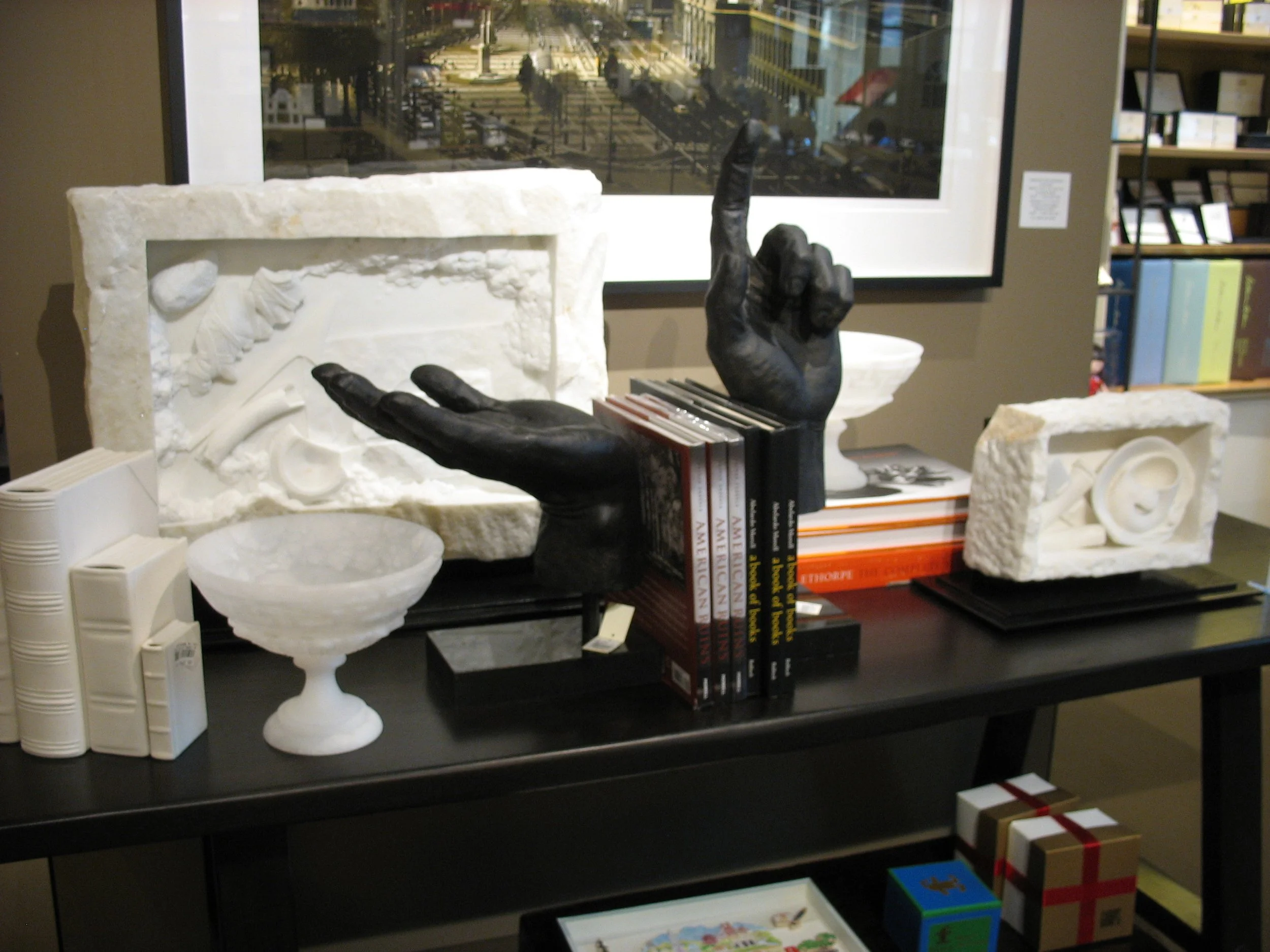MARBLE RELIEF SCULPTURE
An Archaeological Iconography
I would like to draw an analogy between archaeological excavation and stone carving: layer by layer forms are revealed within the mass or matrix. There are some consistent and irreducible characteristics about archaeological activity that form my thoughts about a theory of content and beauty.
First, archaeology employs a rational approach to its subject and this approach is sectional (utilizing straight lines and right angles); the zone or area of enquiry is therefore "framed.” The reasons for events in archaeology are often capricious while the reasons for artistic compositions are based on intent or some creative impulse. Art making is not entirely rational. In archaeology all artifacts are assumed fragile and nothing is expected to be in its original condition. Even seemingly insignificant things or details may be important (or a clue). When things are destroyed we seek to identify them and define their original function or use. Artifacts are connected by context, are site specific and by extension are time specific. Compression and stratification are expected. And finally, what is not uncovered or revealed is unknown.
My sculptural work liberally employs these characteristics to address and examine the meaning in random things, the passage of time, and the value of human activity. A source for my imagery comes from the tradition of still lifes.
Each white marble relief sculpture is made from a single piece of marble. They are hollowed out on the back to make them light enough to be hung on a wall or they can have iron bases to be placed on pedestals or tables.


